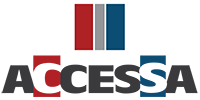
Charles “Red” Scott is credited with saying, no doubt in his signature Texas drawl, “Cash ain’t cash until it’s cash.” The famous corporate leader, who died in 2013, was talking about cash flow.
Staying competitive and excelling in your industry require a strong cash flow system. Without one, you are at risk of unnecessarily spending money on things that aren’t critical or urgent. With a system in place, you can more effectively build funds to invest back into your company, strengthen your chances of getting business loans and pave the way to growth.
A consistent cash flow process takes time and attention to execute, but we have seen clients save more and do more as a result of paying close attention to how money moves in and out of their businesses. Here are our five tips for maximizing cash flow.
1. Get vendors on board to help you manage inventory.
The cash flow process, according to the Small Business Administration, includes:
- Inflow, which comes from operations such as the sale of goods and services, loans, lines of credit, and asset sales.
- Outflow, which occurs during operations such as business expenditures, loan payments, and business purchases.
Inventory is cash that’s tied up in that outflow part of the process. You can’t transition it until you get an invoice and get paid. For example, until a cabinet manufacturer turns its lumber, glue, coatings and hardware into a cabinet, invoices a customer and gets paid, that inventory is cash all tied up. Strive to minimize the amount of raw materials you have on hand to support your cash flow system.
Work with your suppliers to keep only as much inventory on hand as you really need. Tell them how much you’re using and ask them how they can help you strike a balance between having too much raw material available to satisfy production demands, and having too little, leading you to scramble for more when demand and production ramp up. Leverage your vendor to make sure they’re helping you keep your outflow in check with your inflow.
2. Develop a practical min/max system and stick to it.
Determining how much inventory to keep on hand takes several factors including:
- Average consumption of products/materials over a weekly or monthly period
- Suppliers’ necessary lead times to deliver your products/materials to you
With these things in mind, you can set a min/max system. For example, let’s say you know that when you get down to 300 gallons of a coating, you need to place an order for 900 gallons, and you’ll be at 100 gallons when you actually get the 900 delivered. At any given time, you’ll have a maximum of 1,000 gallons and a minimum of 100 gallons. You have enough cushion to feel safe, but not so much inventory to hurt your cash flow.
3. Buy as intelligently as you can.
Think about how you can improve how you buy from vendors. We have had customers who used to order coatings a few times a week. Instead of letting them continue, we encouraged them to consider buying in larger volumes or larger containers. By lowering your frequency of orders, you can possibly save on the price per gallon and save on any delivery fees. Be sure you’re reviewing reports at least quarterly to recognize any trends that could be improved or efficiencies that can be made.
Talk to your vendors about how they can help you make smart buying decisions. If you’re buying 500 gallons of something per month from one vendor, ask the vendor if you can save money by ordering 1,000 gallons at a time. Determine the terms of a sale with your vendor and negotiate.
Think about other ways to boost cash flow. Find out if vendors you frequently purchase from will incentivize you to pay early. It is not uncommon for vendors to offer upwards of 2% discount for early pay. How much is 2% savings worth to you, especially when you consider the discount taken is immediate cash flow (considered inflow) and the savings fall right to the bottom line on your income statement? If they have an interest in getting their money sooner, that can be very valuable to your business.
4. Manage collections and customer relationships.
Cash flow is all about getting paid. A sale on terms is a placeholder, not actual money. It costs you more to make a sale and not collect than making a sale at all. You’ve already spent money on delivery, labor, etc.—you have to collect!
Tighten up your accounts receivable process. Run weekly A/R reports and look for anyone past due or close to past due. Be proactive to notify customers to know where they are. Begin to recognize their behavior so you can handle your relationships well. Ask for updates on a late payment.
5. Do it now.
We see customers who don’t have a strong cash flow system simply out of inattention to it and sheer procrastination. It’s easy to allow your day-to-day responsibilities to get in the way of setting up a new process. If you let your inflow/outflow balance get way out of whack, you will leave money on the table, and ultimately you can grow cash poor.
The great news!
Businesses that do have a strong system in place are confidently running their inventory down to their minimum level before the threat of production backorders comes into play. They are buying as much product as they can to get the best price break possible, without negatively impacting their annual inventory turns needs. Our customers with great cash flow can use cash from the sale of one product to directly invest in more products or materials to keep production humming along, with little fluctuation between inflow and outflow.
How’s your cash flow? Let us know if you need help strengthening your system. Start a conversation; email jtodd@accessa.com.
